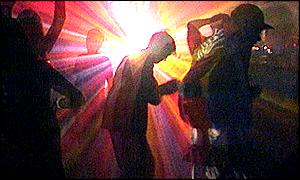 |
Cocaine is either snorted (sniffed), swallowed, injected, or smoked.
Habitual snorting can result in serious damage to the nasal mucous membranes;
shared needles, as with any intravenous drug usage, put the user at increased risk of HIV
infection. The street drug comes in the form of a white powder, cocaine
hydrochloride. The hydrochloride salt and the cutting agents are removed to
create the pure base product freebase. Freebase is smoked and reaches the
brain in seconds. Crack cocaine, also called rock, is a form of freebase that
comes in small lumps and makes a crackling sound when heated. It is relatively
inexpensive, but must be repeated often to maintain the stimulant effects. |


